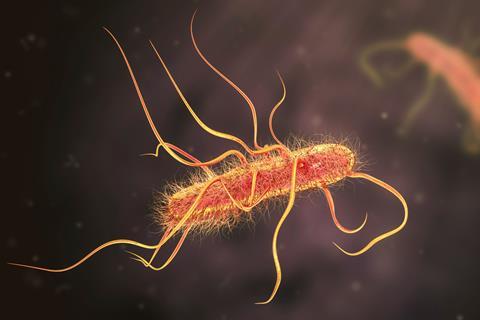
Fluorescein dyes widely used to detect oxidative stress in bacteria are probably worthless, researchers in the US say.1 The research follows a 2024 study by the same authors concluding that another widely-used technique to detect oxidative stress was also ineffective.2 Taken together, the two papers suggest the idea that the production of reactive oxygen species plays a part in the way that bactericidal antibiotics kill is likely incorrect, although this interpretation has proven controversial with other researchers. Understanding the mechanism of action of antibiotics matters, as the design of new drugs is aided by knowledge of how they work.
Some antibiotic agents, such as doxorubicin, better known now as an anticancer drug, exert their cytotoxic effects by generating reactive oxygen species such as superoxide, hydrogen peroxide and hydroxyl radicals. In 2007, a team led by James Collins – then at Boston University in the US – proposed that all antibiotics, including common antibacterial agents, such as penicillin, killed bacteria with the aid of reactive oxygen species.3
Intense controversy ensued in 2013 with the publication of two studies rebutting this.4 One from James Imlay at the University of Illinois, Urbana–Champaign and colleagues, looked unsuccessfully for other evidence of oxidative stress in Escherichia coli bacteria, such as the activation of a transcription factor that responds to hydrogen peroxide. Nevertheless, the hypothesis still has many supporters, and researchers have suggested that reactive oxygen species mediate a wide variety of bactericidal effects from nanoparticles, solar radiation and other sources.
The hypothesis originally rested on two principal lines of evidence: first, that bacteria fortified with antioxidants were more resistant to antibiotics. Secondly, dyes – generally derivatives of dichlorofluorescein diacetate – that fluoresce when oxidised shone more brightly in antibiotic-exposed cells, seemingly showing the presence of oxidative stress. ‘It would have seemed that in those first papers those two different methods validated one another, so in more recent papers people might only have used one of them,’ says Imlay.
In 2024, Imlay and his colleague Sergey Korshunov published a study concluding that the first method was unreliable. Feeding antioxidants to cells tends to slow their growth, they demonstrated, and slower-growing cells are inherently more resistant to stress. In the new work, they turned their attention to the dyes.
Imlay and Korshunov present two main lines of evidence that oppose these dyes’ effectiveness as markers of oxidative stress. First, they showed that bacteria in an oxygen-free environment generated just as much fluorescence as ones in a high-oxygen environment, suggesting that those in an anoxic environment were oxidising the dye using other agents like flavins and quinones. Secondly, they found evidence that bacteria expelled the dyes. ‘Bacteria have lots of efflux pumps that continuously pump out molecules, and it turns out they pump out these dyes,’ says Imlay. ‘Any stress that diminishes metabolic rate has the effect of diminishing the energy charge of the cell, so the pumps stop pumping out the dye. So, whenever you impose a stress on cells [such as an antibiotic] you see an accumulation of dye that has been oxidised by things like flavins, and that increase in cellular dye signal was misinterpreted as evidence of reactive oxygen species.’ Chemicals known to inhibit efflux pump activity also reproduced this effect.
Imlay says that the evidence antibiotics work using reactive oxygen species needs to be set aside. ‘We’re not saying [the antibiotics] don’t work,’ says Imlay. ‘We’re saying their mechanism of action is not through oxidative stress.’ He says that bactericidal antibiotics all have mechanisms that do not depend solely on the presence of oxygen, which explains why they work on bacteria in low-oxygen environments. Future investigations of oxidative stress, he says, should focus on markers such as enzymes. ‘Our lab is investigating which enzymes are the easiest for people to measure the activity of as a good marker of oxidative stress,’ he says.
Several researchers Chemistry World contacted agreed with Imlay that fluorescein dyes are an unreliable marker of oxidative stress in bacteria, but some remain confident in the conclusion that diverse classes of antibiotics work, in part, by inducing oxidative stress. ‘More than a decade ago, we recognised growing concerns about the dyes commonly used to detect reactive oxygen species,’ comments Collins, now at the Massachusetts Institute of Technology. ‘In response, we conducted a study employing an extensive suite of assays to directly measure oxidative damage to key cellular components, including proteins, DNA and RNA.’ Half an hour after being treated with various antibiotics, E. coli showed common markers of oxidative stress, that later diverged into different causes of cell death.5 ‘This work … demonstrated clearly that many bactericidal antibiotics induce oxidative stress as part of their mechanism of action.’
References
1 S Korshunov and J A Imlay, Proc. Natl. Acad. Sci. USA, 2025, DOI: 10.1073/pnas.2516113122
2 S Korshunov and J A Imlay, Mol. Microbiol., 2024, DOI: 10.1111/mmi.15286
3 M A Kohanski et al, Cell, 2007, DOI: 10.1016/j.cell.2007.06.049
4 Y Liu and J A Imlay, Science, 2013, 339, 1210 (DOI: 10.1126/science.1232751)
5 P Belenky et al, Cell Rep., 2015, DOI: 10.1016/j.celrep.2015.09.059



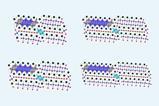

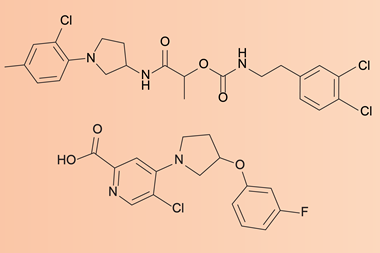
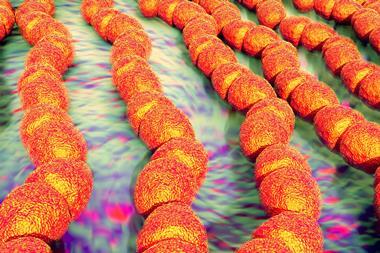


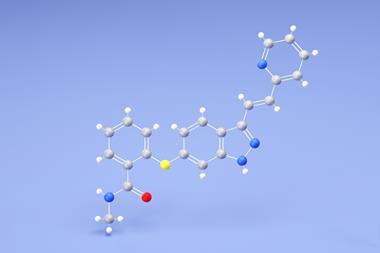







No comments yet